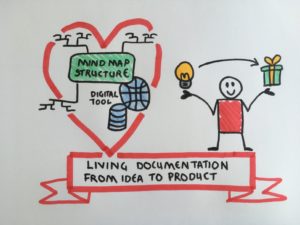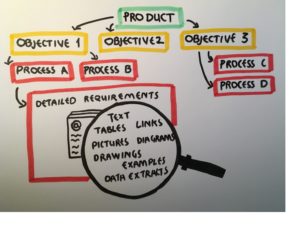The Business Analyst’s Approach to Problem Solving
As a business analyst you will have to understand your clients’ needs and constructively provide valuable solution options. You will have to find the real roots of the needs and approach problems in a way that will enable change.
Your task is not just to collect requirements. It’s to elicit requirements in order to ensure long – lasting change. It is common for clients to come up with the solution in mind. For example, a client may request an addition of a step to the process. Diving more and trying to figure out the actual need behind this request may reveal that there is another way of treating the actual need.
The following stages are commonly used by Business Analysts when problem solving is required.
1) Problem Definition
Τhe first step in the approach is the problem definition. Gathering information, ascertaining its validity against other sources of information, and analyzing the available information are key at this stage. The way a problem is identified first and then defined can have a significant impact on the alternatives that may be emerge. Identifying the problem will also delineate the goals and objectives that the alternative solutions should cover. The more complete a problem statement is, the easier it will be to identify alternatives, selection & evaluation.
Common pitfalls in this stage include:
- Too wide or too narrow definitions of the problem can impact the quality of the solution. Analysts are asked to find the balance between small and large range so that there are several alternatives.
- Focusing on the symptoms rather than the causes is a common mistake in defining a problem. Of course the subjectivity involved in characterizing the symptom often makes this mistake inevitable. Many techniques such as the “5 Whys” can help in avoiding this pitfall.
- Choosing the right problem means that while there may be parallel problems we must choose with a systemic approach the problem that is most possible to some extent another problem. Systemic thinking is of paramount importance as there is usually an interdependence between seemingly unrelated problems.
Advertisement
2) Alternative Solutions
Once the problem is identified, the analyst, should, together with the technical team to search for possible solutions.
Solution options has to be aligned with the project scope, the overall business needs and the technical feasibility. Solutions options must be realistic from business and technical side and of course valid in the eyes of the stakeholders.
A common mistake in this step is to abandon an alternative too quickly. This often happens under the pressure of time and other circumstances. However, because an alternative seems convenient, this does not make it ideal. It may have harmful side effects, or it may be less effective than other alternatives that would result if given enough time at this stage.
One way to limit the error of the incomplete “pool of alternatives” is to involve key stakeholders in discussions of identifying different solutions. It’s a good way for different perspectives to be presented and contribute to different solution alternatives.
3) Identify the best solution
For every solution option an assessment shall be done against the other solution options. The business analysts in collaboration with the key stakeholders identify the criteria that will be used for this comparison.
A cost-benefit analysis is commonly used for each solution option in order to figure out the benefits against the costs. However sometimes the full benefits or costs cannot be monetized, and indirect benefits or costs may be derived by the implementation of a solution. So, it is not a good idea to compare different options based strictly on a cost – benefit analysis as it is not easy to think about all costs and benefits and give them a value.
An analyst understands the cognitive limitations of human information processing capabilities and the difficulty of making optimization decisions. It is worth noting that the best alternative is choosing an environment of delimited rationality. An environment of delimited rationality is created as the limits of the decision-making process are set by the available information and the context.
Problem solving is vital in all aspects of business from people problems to technical problems and from short-term to long-term problems. And problem-solving involves two completely different, possibly conflicting thought processes: creativity and decision making. A business analyst shall continuously try to improve problem solving skills by implementing in practice useful techniques and approaches and continuously following up the outcomes.






